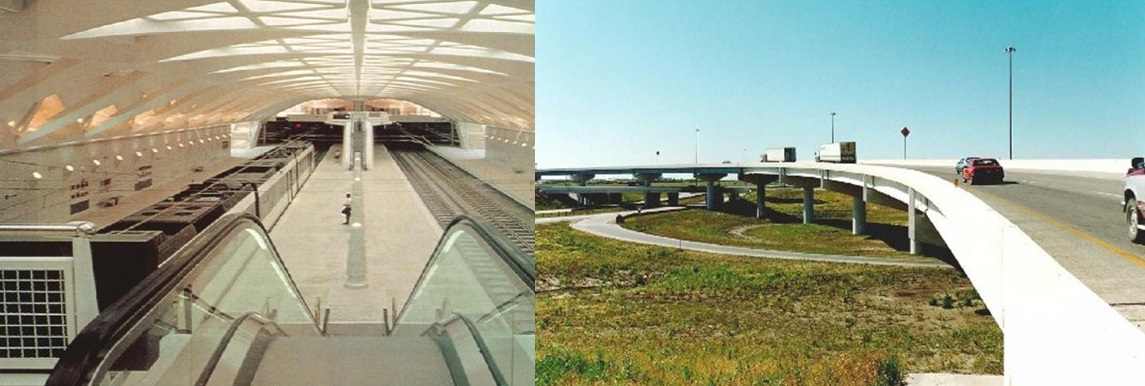Transportation Engineering
Transportation systems are used to move people and goods safely and efficiently. Transportation engineers are involved with planning, designing, construction, operation, and maintenance of the transportation infrastructure. The infrastructure consists of streets, highways, railroads, airports, waterways, ports, mass transit, bike trails, and pedestrian walkways. One of the challenges is to improve current transportation facilities to meet increasing demand, and to smoothly integrate new facilities within the exisisting infrastructure.
Some of the areas of current and future interest to transportation engineers include:
- non-destructive inspection methods for the evaluation of the condition and safety of bridges, railroads, roads, airports, and pipelines
- redesigning existing right-of-ways--highways, intersections, interchanges, taxiways, bridges, parking facilities
- rehabilitating roads, airports, railroads, and bridges
- interconnected traffic controls
- quality control of transportation construction
- use of different materials in bridge and road design
- use of GIS and differential GPS (global positioning systems) for facility location, operation, and design.
Participating Faculty: Dr. Ying Huang, Dr. Wenjie Xia
The first picture shows a subway station, while the second shows a tri-level highway interchange at the intersection of I-94 and I-29 in Fargo, ND.



